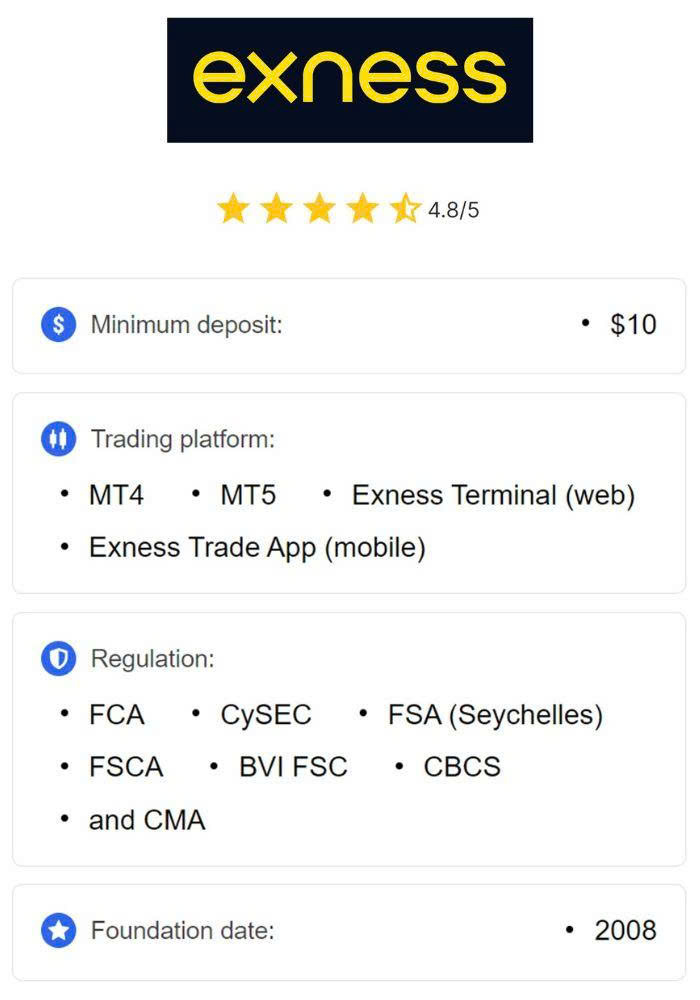
Top 10 MT4 Indicators Exness
In the fast-paced world of forex trading, utilizing the right tools and indicators can make all the difference in your trading success. This article explores the top 10 mt4 indicators exness extrading-za.com that can significantly enhance your trading strategies and help you make informed decisions.
1. Moving Average (MA)
The Moving Average is one of the simplest yet most effective indicators used by traders. It helps in smoothing out price action by filtering out the “noise” from random price fluctuations. There are different types of moving averages, such as Simple Moving Average (SMA) and Exponential Moving Average (EMA). Traders often use MAs to identify the direction of the trend—bullish or bearish—and potential support and resistance levels.
2. Relative Strength Index (RSI)
The Relative Strength Index is a momentum oscillator that measures the speed and change of price movements. RSI ranges from 0 to 100 and typically uses a level of 70 to identify overbought conditions and a level of 30 for oversold conditions. It’s a valuable tool for spotting potential reversal points in the market.
3. Bollinger Bands
Bollinger Bands consist of a middle band (the moving average) and two outer bands that are standard deviations away from the mean. The distance between the bands varies based on volatility, helping traders identify overbought and oversold conditions. When the price touches the upper band, it may indicate the market is overbought and vice versa.
4. MACD (Moving Average Convergence Divergence)
The MACD indicator uses two moving averages to show the relationship between them. Traders look for indications of bullish or bearish momentum by analyzing the MACD line and signal line crossover, as well as divergences with the price action. It’s a powerful tool for confirming trends and potential reversals.
5. Stochastic Oscillator
The Stochastic Oscillator compares a particular closing price of a security to a range of its prices over a specific period. The indicator ranges between 0 and 100 and is used to identify overbought or oversold conditions, similar to the RSI. It can provide trading signals when it crosses certain thresholds.

6. Fibonacci Retracement Levels
Fibonacci retracements are used to identify potential reversal levels based on the Fibonacci sequence. Traders use horizontal lines to indicate support and resistance levels at the key Fibonacci levels before the price continues in the original direction. This tool is essential for traders looking for pullback opportunities.
7. Average True Range (ATR)
The Average True Range (ATR) measures market volatility by decomposing the entire range of an asset for that period. It helps traders determine how much an asset typically moves during a given time frame, which is critical for setting stop-loss orders and taking profits.
8. Ichimoku Cloud
The Ichimoku Cloud is an all-in-one indicator that provides information about support, resistance, trend direction, and momentum. This comprehensive tool may seem complex at first, but it can offer valuable insights for both new and experienced traders. Key components include the cloud itself, which acts as a dynamic support and resistance zone.
9. Parabolic SAR (Stop and Reverse)
The Parabolic SAR is a trend-following indicator that helps traders identify potential reversal points in the market. It appears as dots above or below the price on a chart, providing signals for when to enter or exit trades. It’s particularly useful for trending markets, allowing traders to maximize profits while limiting losses.
10. Volume Indicator
Volume is a crucial aspect of trading, as it indicates the number of shares or contracts traded during a specific time frame. By using volume indicators, traders can validate trends or potential reversals. For example, increasing volume confirms a strong trend, while decreasing volume can indicate a lack of interest or a possible reversal.
Conclusion
Choosing the right indicators in the MT4 platform offered by Exness can greatly improve your trading strategies. The indicators listed above provide diverse functionalities that cater to different trading styles and objectives. It’s recommended to combine several indicators to create a comprehensive strategy while testing them on a demo account before employing real funds. Remember, successful trading does not rely solely on indicators; risk management and emotional discipline are just as essential.